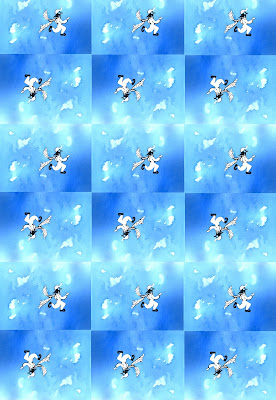Peter Max was born in 1937 in Berlin. During his childhood, his family moved around, first to Shanghai (where his family lived next to a Buddhist temple and a Sikh monastery), then to Israel (via India, South Africa, and Italy), and finally to the United States (via Paris). Peter Max's cosmopolitan upbringing influenced his later art.
Peter Max received extensive training in art. At first, he did realistic art (e.g., portraits), but quickly moved to graphic design and the pop/psychedelic art style for which he is famous. Love and Different Drummer (below), both created in 1968, are examples of his pop art style.
I personally find the pop art style very appealing, and I want to understand why the images work. The images make use of only three design elements: color, shape, and line. The colors are bright and tend to be primary. I can't discern a color scheme per se, but do notice that Peter Max makes use of analogous colors and complementary or near complimentary colors, all in the same piece. For example, in Love, the colors inside the Love letters are analogous blues and purples. The purple part of the 'L' is next to yellow background, and the blue part of the 'L' is next to an orange solid circle and a lighter orange background.
Pop art is a style that looks easy but it is very hard to do well. I tried to do the Illustration Friday prompt "Pet Peeves" in a pop art style; the results are here. While my Pet Peeves piece is not one of my better efforts, I do like the bright colors and was surprised to see how far the design element color can carry a piece of art.
Starting in the late 1970's, Peter Max started to move towards a Neo-Expressionism style. He did a number of Americana pieces; here is one example. I love the bright, loose, primary colors and the minimal black contour drawing that defines the face.
Here are more examples of Peter Max's Neo-Expressionism style (most of which are in acrylics). Until I embarked on this study, I had no idea that Peter Max did this type of work. I only knew his pop style.



Finally, Peter Max has some pieces that interpret masterpieces in a fun and original way. Mona Lisa, below, is an example.
I tried this approach for the Illustration Friday prompt "Heavy". The result is an interpretation of Rubin's Venus in Front of the Mirror . I find this approach to the masters to be more creative and enjoyable than blindly copying their work.


























